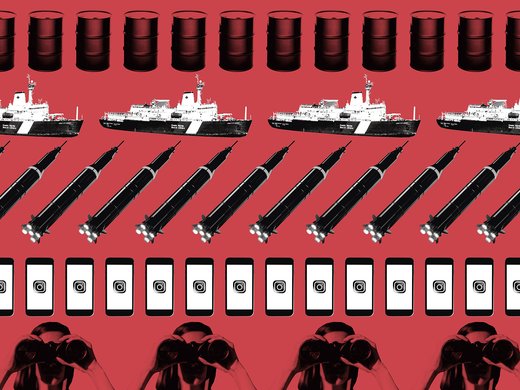Donald Trump’s inauguration as president of the United States represents the biggest challenge to Canada’s sovereignty since Confederation. His tariffs against Canadian steel, aluminum and autos are intended not just to shift production to the United States but to also reinforce his threat to annex Canada. Whoever is prime minister after the April 28 election will have a long list of priorities to tackle, from diversifying international trade relationships and freeing internal trade, to ensuring that workers thrown out of their jobs by US tariffs have the assistance they need to support their families. High on this list is an ambitious program of nation-building infrastructure investments, including pipelines, electricity generation capacity and smart grids, as well as the rapid strengthening of the Canadian Armed Forces.
These investments and this buildup reflect the need for Canada to diversify its trade relationships and build a more robust defence capacity, consistent with economic security and national defence priorities. Success depends on mobilizing the private sector in support of national objectives. It will require clarity on the appropriate role of government in these efforts, based on comparative advantage, market failures, private versus social returns, and risk tolerances. And, in cases where government must lead, such as defence procurement, leadership and prioritization are critical to success.
In some respects, the challenge Canada faces today is akin to the one it faced at the outbreak of the Second World War. Only then just emerging from the shadows of the Great Depression, the country was woefully ill-prepared when the Government of Canada declared war on Nazi Germany in September 1939. The army, navy and air force had been deprived of resources during the lean years of the 1930s. More worryingly, the country lacked the manufacturing capacity to convert to defence production. And yet, within a remarkably short time, the country was producing enough arms and matériel to not only equip its own armed forces but also to supply its allies.
This buildup reflects the need for Canada to diversify its trade relationships and build a more robust defence capacity, consistent with economic security and national defence priorities.
Most Canadians probably don’t appreciate the enormity of this effort. By the end of the war, Canada’s war production ranked fourth after the United States, the United Kingdom and the Soviet Union. Meanwhile, Canada had the third-largest navy in the world, the fourth-largest air force, and about one million men and women serving in the armed forces from a total population of roughly 11 million. To use a tired boxing metaphor, it was a clear case of “punching above our weight [class].” In fact, given the significance of its contribution to the war effort and viewed in the context of the challenges of today, the question is, how did Canada do it?
The answer to that question has five elements.
First, leadership. The government of Prime Minister William Lyon Mackenzie King was endowed with a team of talented and effective cabinet ministers occupying key portfolios, including J. L. Ralston, J. L. Ilsley and Louis St. Laurent. But to lead Canada’s rearmament drive, King relied on the remarkable C. D. Howe, a man of exceptional organizational and managerial talents. An engineer by training, before entering politics Howe built a successful business. He is largely responsible for building the grain elevators that to this day, still dominate the skylines of many Prairie towns. Reflecting his influence, and his success in boosting production, the question posed above could easily be reframed as, how did Howe do it?
Howe not only displayed a prodigious capacity to get things done, but he also had an intuitive sense of priorities. When questioned on the projected costs of his ambitious plans to raise defence production, for example, he ended debate by observing that the costs were insignificant compared to those incurred if the war against fascism were lost. It was an argument few could rebut.
Second, authority to act. It was clear that if Canada were to serve along with the United States in what would later be referred to as an “arsenal of democracy,” the government would have to assume greater control over the allocation of resources. Howe needed the powers commensurate with the task at hand. To accomplish this, the September 1939 budget, which was tabled in Parliament a mere three days after the declaration of war, delegated to the new Department of Munitions and Supply broad and strong powers over procurement, production, essential commodities and other supplies.
While the authority given to Howe was considerable, his department remained accountable to Parliament, and great care was taken to avoid the mistakes made a few years earlier in the procurement of Bren guns. In that scandal, an untendered contract for that purchase in 1938 led to accusations of corruption being raised in the House of Commons. And though a Royal Commission led by Judge Henry H. Davies of the Supreme Court found no evidence of corruption or incompetence, Justice Davies cited a lack of controls. Going forward, therefore, and for the duration of the war, an already overworked Department of Finance and finance minister carefully tracked spending.
By the end of the Second World War, Canada’s war production ranked fourth after the United States, the United Kingdom and the Soviet Union.
Third, personnel. Howe instinctively realized that to ramp up production of military equipment, he would need to draw on private-sector expertise. He immediately went about recruiting leading businessmen (his so-called dollar- a-day men), who had first-hand knowledge of production, supply and logistics, to staff his department. They answered the call out of patriotic duty — one chartering a plane in order to report for duty in Ottawa the day after being approached by Howe on a Halifax golf course. (It should be noted that while Howe insisted on paying the nominal fee their name implies to create a formal employment relationship, most were compensated by their firms during their service in government.)
The work of the dollar-a-day men was complemented by the efforts of a group of exceptionally gifted men and women occupying key posts in the Department of Finance, the Bank of Canada, the precursor to today’s Global Affairs Canada, as well as the various specialized government agencies and bodies created to manage the war effort. And together, they ensured that the government was funded, foreign exchange reserves were prudently managed, access to critical resources and machine tools was secured, and production agreements with allied partners were arranged. In many ways, it was the acme of the Public Service.
Fourth, scale. Howe and his colleagues understood that scaling up production was needed to keep costs down. The longer the production run, the lower the per unit (or average) cost, as the fixed costs of setting up a production line are spread over a larger volume of output and as managers uncover ways to reduce costs.
Howe realized that, even with the projected increase in mobilization anticipated at the time, the needs of the Canadian forces were too small to obtain significant economies of scale. Prior to May 1940, however, attempts to secure British orders to achieve such economies were largely unsuccessful. That changed with the fall of France. Faced with the loss of its arms and equipment on the beaches of Dunkirk and the looming threat of invasion, the UK government turned to Canada to rearm. In time, production agreements were also reached with the United States to specialize production to achieve scale economies.
Fifth, flexibility. The final element of the answer to the question of how did Howe do it is his willingness to experiment, adapt and innovate as required. It was an approach that is perhaps best summed up by the quintessentially Canadian phrase: Crown corporations, if necessary, but not necessarily Crown corporations.
Whenever possible, Howe relied on private firms to fulfill production orders. In doing so, his team deployed a range of different contract designs, depending on the risks, scale of production required and the constraints facing private firms, rejecting those found to be too costly or too inefficient. For example, “cost plus” contracts, under which the government paid firms for the cost per unit and a per unit markup, were initially used but were found to be highly inefficient because they did not provide an incentive for private firms to minimize costs (the reverse, in fact, was true). Such contracts were replaced with production agreements that created financial incentives to minimize costs, subject to quality controls. At the same time, Howe also provided private firms with capital injections, if needed, to scale up production (and to foster competition with other larger firms).
But when private firms were unwilling to tender a bid, either because the risks involved were too great or because they lacked the technical capacity to meet the delivery dates, Howe didn’t hesitate to create Crown corporations to fill the void. His readiness to innovate in this manner had the salutary effect, once again, of encouraging competitive bidding and thus containing costs, since private firms knew that the government was prepared to bypass them if necessary. By the war’s end, 28 Crown corporations had been formed, responsible for the production of everything from rifles to synthetic rubber.
The combination of these five elements — leadership, authority to act, personnel, scale and flexibility — enabled Howe to build a manufacturing base that not only supplied Canada’s war needs but also those of our allies. It is an inspiring episode in Canadian history. But what is truly remarkable in this story is that, in contrast to the Great War experience two decades earlier, reported cases of corruption and war profiteering were largely absent. This is attributable to the sterling character of the men and women who made it happen and their determination to work tirelessly for the good of the country. The same five elements and identical values and devotion are required to meet the challenges facing Canada today.



